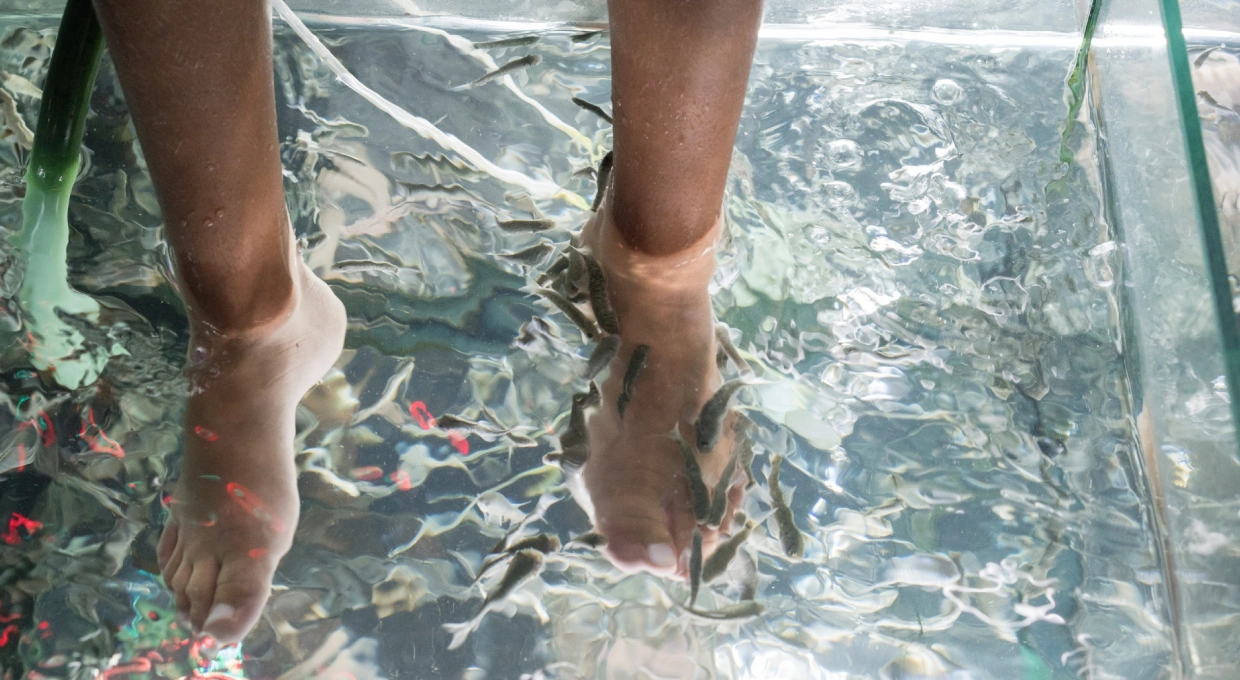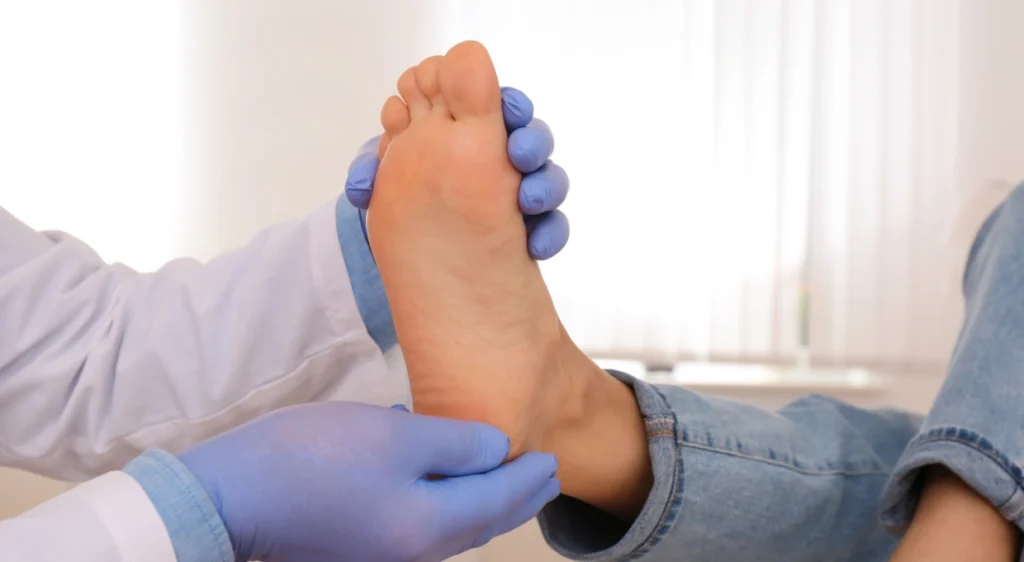Fish foot therapy, known as ichthyotherapy, has gained popularity in recent years as a beauty treatment that promises to exfoliate the skin of the feet naturally using Garra rufa fish. While this practice may seem harmless and appealing, there are serious concerns regarding its safety and efficacy, especially with regard to public health.
What does ichthyotherapy consist of?
Ichthyotherapy involves submerging the feet in a tank of water where Garra rufa fish, also known as “doctor fish,” remove dead skin cells through gentle suction. This technique is promoted as a natural and relaxing way to exfoliate the feet, and is especially popular in spas and beauty centers around the world.
Risks associated with ichthyotherapy

Despite the benefits attributed to it, ichthyotherapy carries several significant risks: Risk of infections: One of the main problems is the possible transmission of bacterial, fungal and even viral infections. Since the water is not adequately disinfected between each use, and the fish cannot be sterilized, there is a risk of diseases such as hepatitis C or HIV being transmitted between users. 2. Hygiene and safety: In many centers that offer this treatment, the water is not changed between clients, and the tanks are not properly disinfected, which significantly increases the risk of cross-infection. In addition, the temperature of the water used, which is usually between 30 and 40 degrees Celsius, can favor the proliferation of bacteria. 3. Use of inappropriate fish: In some cases, Garra rufa fish have been replaced by other more economical species, such as the “Chin Chin”, which have teeth and can cause wounds when biting the skin. This change further increases the risk of infections and other health problems.
Regulations and situation in Spain
In Spain, ichthyotherapy has been the subject of debate due to the aforementioned risks. Although there is no explicit prohibition at the national level, many autonomous communities and city councils have restricted or discouraged its practice in establishments that do not comply with strict hygiene and safety standards. Health regulations, such as Royal Decree 742/2013, establish rigorous criteria for water quality in swimming pools and spas, but the application of these standards to ichthyotherapy is complex due to the presence of live fish that cannot be exposed to disinfectants.
Recommendations
Because of the associated risks, many podiatric and public health experts advise against ichthyotherapy. If you decide to undergo this treatment, it is crucial to ensure that the facility meets all hygiene standards, that the water is properly changed and filtered between uses, and that genuine, healthy
Conclusion
Ichthyotherapy may seem like a novel and natural option for foot care, but its risks far outweigh the potential benefits. Consider other safer and more effective alternatives for the care of your feet, such as professional podiatry, where hygiene and proper treatment are guaranteed without putting your health at risk.



